From the April 2024 issue of Apollo. Preview and subscribe here.
When the Dutch artist Maarten van Heemskerck arrived in Rome in 1532, he found a city in flux. The troops of Holy Roman Emperor Charles V had sacked the city just five years earlier, and its people, their numbers greatly reduced, were still living with the aftershocks. St Peter’s Basilica was not yet complete – Michelangelo and others were working on its construction. Two years into van Heemskerck’s stay, Pope Clement VII died and a power vacuum emerged. As a result, major artistic commissions and building projects in the city ground to a halt. Nevertheless, Rome remained the centre of artistic production in Europe, and the impact it had on van Heemskerck would stay with him for the rest of his life.
Born in 1498 in a village just outside Haarlem, van Heemskerck spent his early career training in various workshops in Haarlem and Delft. In 1527 van Heemskerck, by this point a seasoned artist, entered the workshop of Jan van Scorel, who himself had spent time in Rome and Venice in the early 1520s and was deeply influenced by Italian artists, particularly Raphael. Van Heemskerck was thus trained in the Italian style, taking cues from van Scorel and from the selection of Italian prints that were circulating in Holland at the time. By the early 1530s, however, van Heemskerck had had enough of second-hand Italian influences. He wanted to go and see Rome for himself.
Van Heemskerck was one of the first artists to make this kind of educational expedition to Rome; others who went before him tended to go as either diplomats or pilgrims. We don’t know exactly how he got there – he may have taken a boat down the Rhine or travelled by horse and carriage – but it took him around three months, a fairly quick journey at the time. His 16th-century biographer Karel van Mander recorded that van Heemskerck was an anxious person who was self-conscious about his lack of bravery, but it seems he put that aside in making what was at the time a rare and dangerous trip.
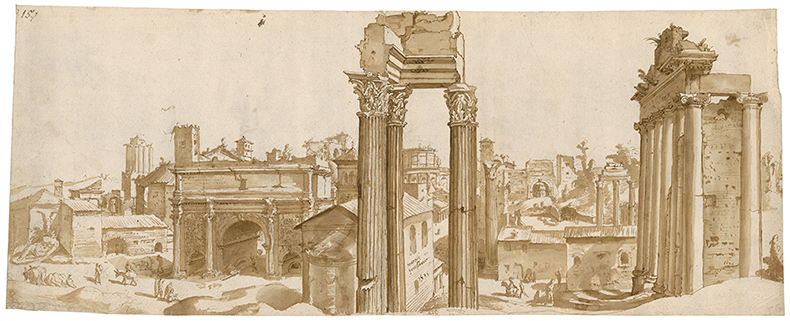
View of the Forum Romanum from the Tabularium (1535), Maarten van Heemskerck. Kupferstichkabinett, Berlin. Photo: Dietmar Katz; © Staatliche Museen zu Berlin
For the four or five years that van Heemskerck lived in Italy, he almost never ventured outside of Rome. There is one extant drawing made in Tivoli, around 30km away, but he never went to Naples or Venice. Although Haarlem was a thriving cultural centre, it was a small place; Rome must have impressed him in a way that is difficult to imagine nowadays. Here, he had the ruins of antiquity at his fingertips and, unlike in Holland, of course, hills from which to view – and draw – them all.
When van Heemskerck arrived, he knew nobody in the city. We are aware of two or three other Dutch artists who were in Rome at the same time as him, and he certainly met with Italian painters and draughtsmen, seeking to learn from their techniques. Perhaps most significantly, he met and befriended Giorgio Vasari, who would later go on to mention van Heemskerck in his Lives of the Artists (1568). He had to make a living somehow, so he solicited commissions, mostly from cardinals, and found several patrons, one of whom we know by name (Rodolfo Pio da Carpi). For the most part, however, van Heemskerck wandered around Rome, drawing vedute – detailed city views – in his sketchbook or on large loose sheets. Around 200 such works from his time in Rome still exist today, but he may well have produced many more. The Forum Romanum is the place he depicted most often, from various perspectives, and his View of the Forum Romanum from the Tabularium (1535) is one of the most beautiful examples. Many of the drawings we have are loose sketches – including a smaller veduta from his sketchbook of the Forum from the south side – but this is a highly accomplished, finished work, perhaps even intended to be sold.
The drawing is quite large and would have been done not in a sketchbook but on loose sheets of paper. Because it shows a 180-degree view, van Heemskerck would have had to make several preparatory sketches of the architecture and topography before producing the final drawing. He made a light sketch in black chalk and then, with a pen and brown ink, marked the outlines of each part of the vista, before using a brush to apply a brown-ink wash over the paper. Although van Heemskerck was a skilled draughtsman, he would have been working with new materials: detailed analysis shows that he used ink and paper sourced in Italy rather than bringing them with him.
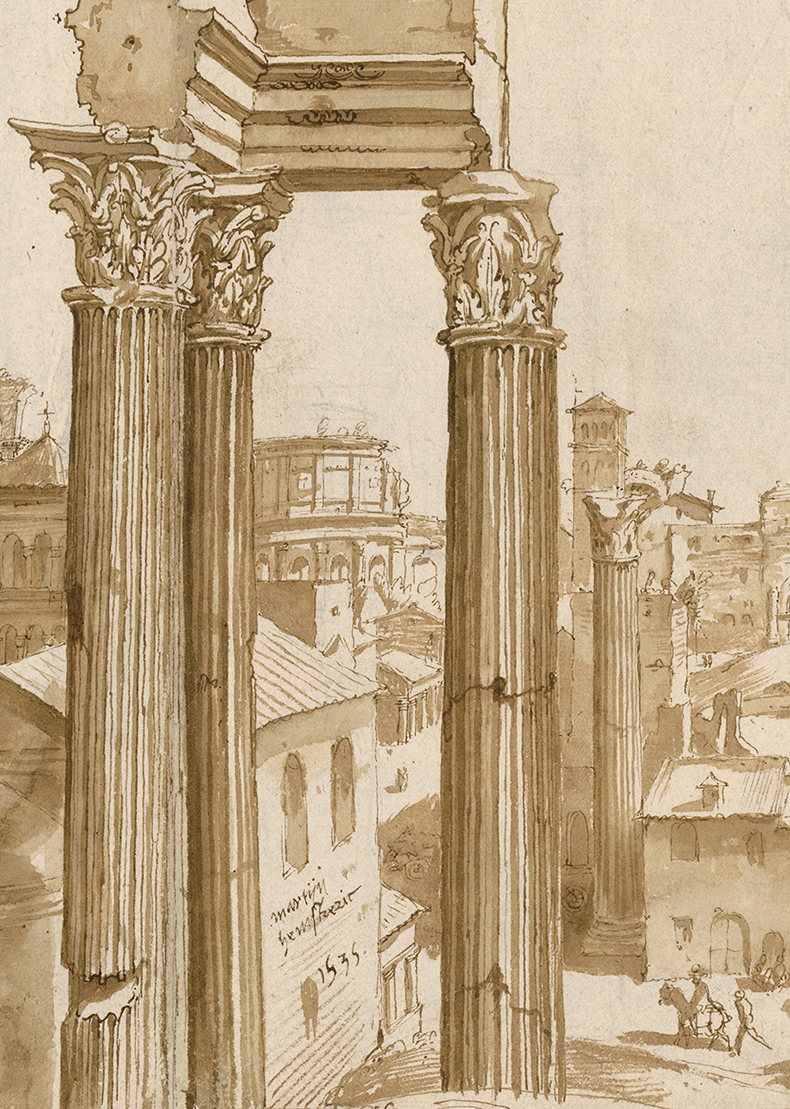
View of the Forum Romanum from the Tabularium (1535; detail), Maarten van Heemskerck. Kupferstichkabinett, Berlin. Photo: Dietmar Katz; © Staatliche Museen zu Berlin
The drawing shows the Forum from the northwest. The ruins in the foreground are the Arch of Septimius Severus (on the left hand side) and the Temple of Saturn (on the far right). In the centre stands the Temple of Vespasian and Titus, through which we can see the Colosseum far off in the distance, in a characteristically skilled rendering of perspective. The result is a remarkably accurate depiction of the Forum: if you go there today and stand on the same spot that van Heemskerck did, the view will not look all that different.
But beyond the architectural verisimilitude, van Heemskerck also manages to evoke the atmosphere of the place. Here he was capturing late afternoon in the Forum, as is clear from the way that the shadows almost melt off the Temple of Saturn on to the house beside it, which would only happen in that way when the sun was in the west. The light brown wash he used gives an impression of the warmth and light of southern Europe. On glancing at this drawing, the viewer knows immediately that they are in Italy, and not in Holland, Germany or anywhere else.
Van Heemskerck tended not to draw everyday life; it was the architecture and ruins of Rome that fascinated him most, and that much is clear from this drawing. If a scene had a bustling market, for example, he would often leave it out. Here, however, he included several narrative details. Next to the Arch of Septimius Severus we find several animals – cows, oxen, a donkey – and people ambling past. There is even, to the right of the donkey, a draughtsman, probably imagined, that van Heemskerck may have included as a self-referential detail, a kind of mirror of himself.
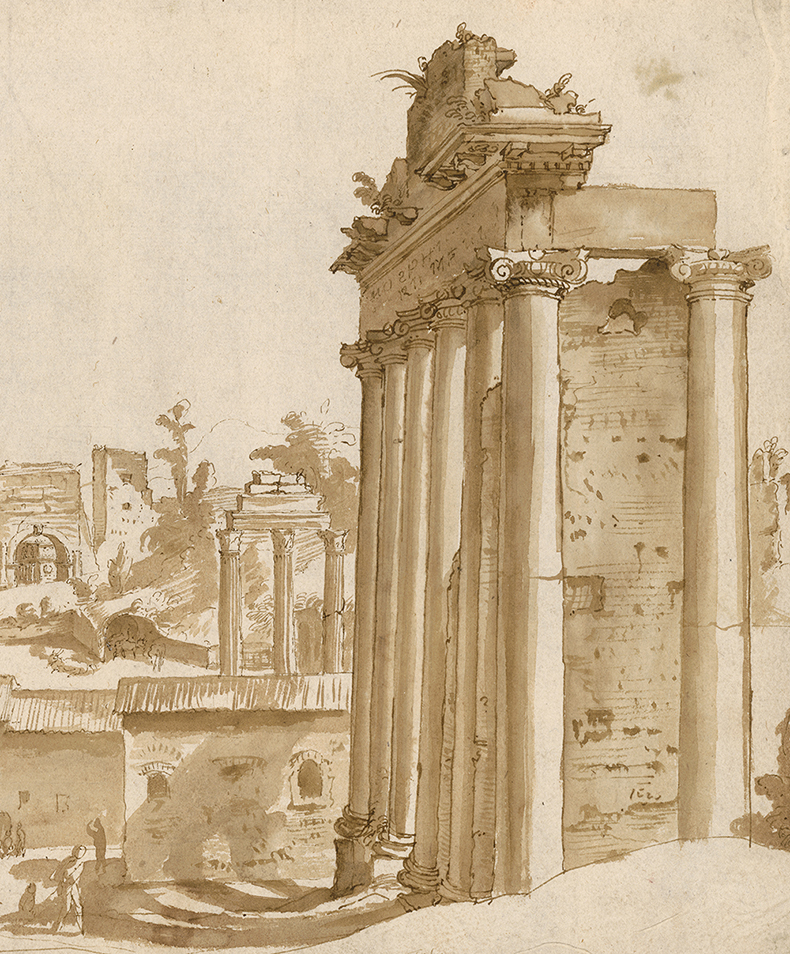
View of the Forum Romanum from the Tabularium (1535; detail), Maarten van Heemskerck. Kupferstichkabinett, Berlin. Photo: Dietmar Katz; © Staatliche Museen zu Berlin
Most interesting, however, is the way that van Heemskerck has signed the work. Between the two columns in the centre of the drawing, in the foreground, his signature can be found, in perspective, as if graffitied on to the wall of the Church of Santi Sergio e Bacco. Van Heemskerck signed most of his works but rarely in such a prominent way, with the signature embedded into the scene itself rather than floating in the corner of the page. He was a man who desperately wanted to be remembered, and part of his attempt to secure his own legacy came through philanthropy: he founded several charitable organisations, devoted time to helping orphans in Haarlem and gave money to the city. Here, we see this obsession with posterity come through in his art. By embedding himself on the Forum Romanum in this way, van Heemskerck is reminding the viewer that he went to Rome, underlining his own craftsmanship and ultimately positioning himself as the expert on antiquity.
Van Heemskerck’s main objective in going to Rome was to find motifs that he could use in his work, and indeed much of his later work bears the imprint of his Italian sojourn: his religious prints, for example, often feature ruins, amphitheatres or Roman columns in the background. By including these motifs in his work, he was underlining the historicism of his paintings and reminding viewers of the transience of the material world – of the fact that even Rome, the capital of the Christian empire and of the ancient world, cannot escape the inevitable passage of time.
Van Heemskerck never left Haarlem again after he returned from Italy, except for a brief stay in Amsterdam while Haarlem was besieged by the Spanish in 1572–73. He certainly never went back to Rome, though he returned to it constantly in his work. In one of his most famous paintings, a self-portrait produced in 1553, around 15 years after he returned from Italy, van Heemskerck paints himself standing proudly next to the half-ruined Colosseum. And in a detail that resembles the small draughtsman in the corner of his View of the Forum Romanum from the Tabularium, in this self-portrait he includes a figure drawing the Colosseum itself. In the decades after he visited Italy, more and more Dutch artists – the Floris brothers in the 1540s, for example, and the Bril brothers towards the end of the century – made the journey, and by the early decades of the 17th century there was a significant Dutch community in Rome. But van Heemskerck was one of the very first, and he never let us forget it.
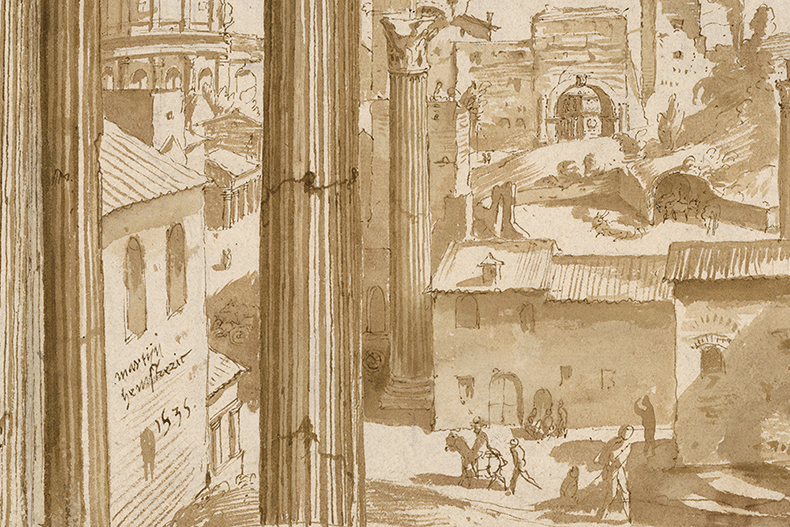
View of the Forum Romanum from the Tabularium (1535; detail), Maarten van Heemskerck. Kupferstichkabinett, Berlin. Photo: Dietmar Katz; © Staatliche Museen zu Berlin
As told to Michael Delgado by Christien Melzer, curator for Netherlandish and English art before 1800 at the Kupferstichkabinett, Berlin.
‘The Allure of Rome: Maarten van Heemskerck Draws the City’ is at the Kulturforum in Berlin from 26 April until 4 August.
From the April 2024 issue of Apollo. Preview and subscribe here.
Unlimited access from just $16 every 3 months
Subscribe to get unlimited and exclusive access to the top art stories, interviews and exhibition reviews.

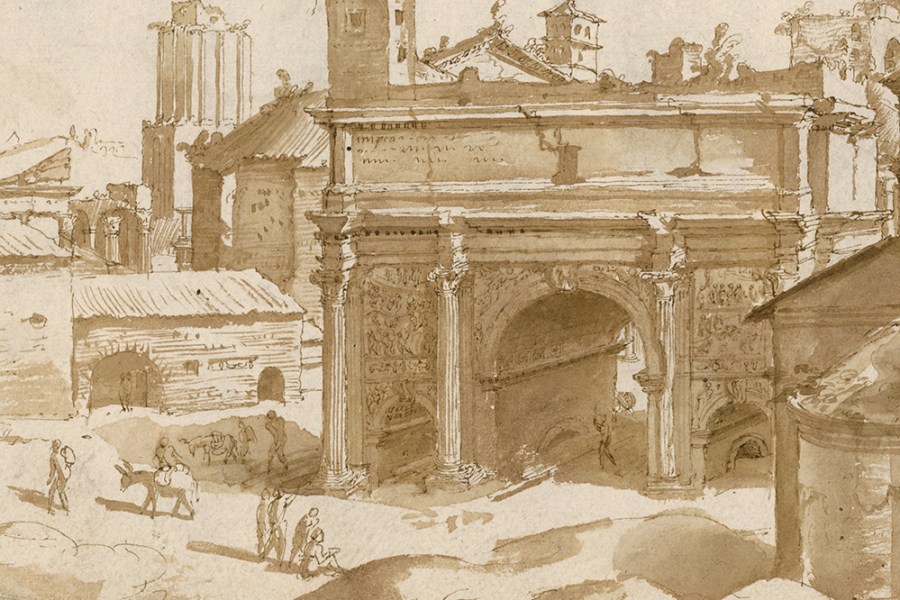
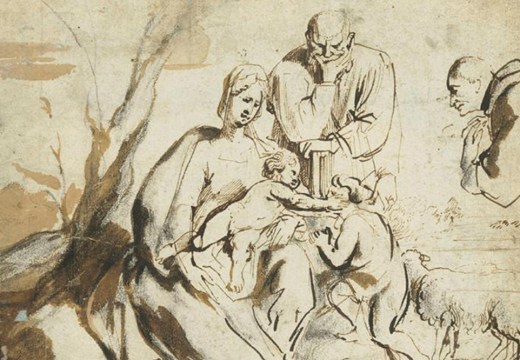
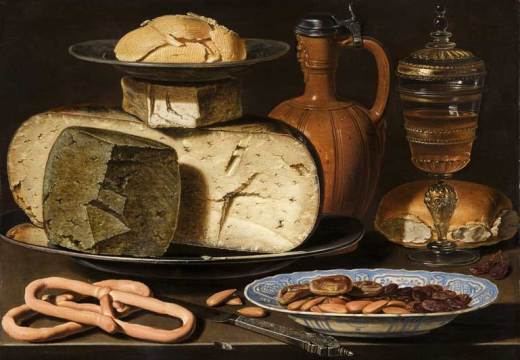










![Masterpiece [Re]discovery 2022. Photo: Ben Fisher Photography, courtesy of Masterpiece London](http://www.apollo-magazine.com/wp-content/uploads/2022/07/MPL2022_4263.jpg)
Has the Fitzwilliam lost the hang of things?